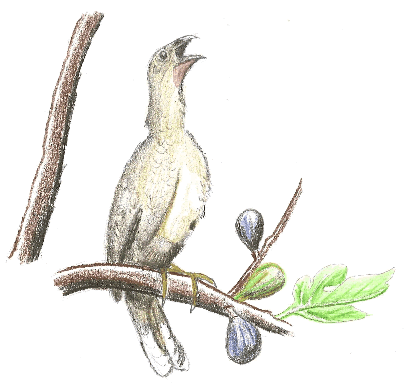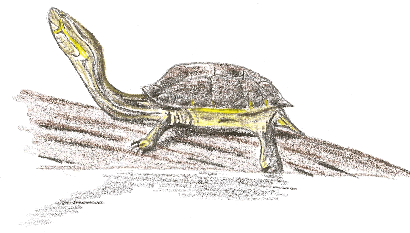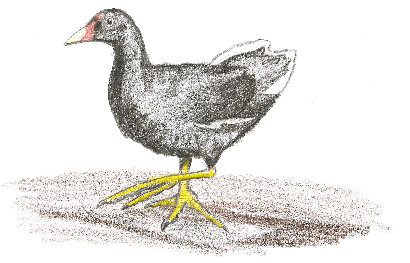Twelve Days of Christmas: the Lone Star version. (original) (raw)
Lately, it�s almost impossible to go a day without hearing the popular Christmas carol the Twelve Days of Christmas. Whether it�s projected from the eager gapes of a schoolchildren�s choir, blasted from the loudspeakers of crowded malls bustling with frantic last minute shoppers, or piping forth from a car radio, heralding in the annual migration to a distant family gathering, those drumming drummers and mixed flocks of plump birds echo in our ears and sublimely ease us into the holiday spirit.
First published in English in 1780, this traditional French medley glorifies the 12 days between Christmas proper and the Feast of the Epiphany on January 6. American fans pay homage to Milwaukee�s Emily Brown who imported the tune in 1910 to brighten a Wisconsin Christmas extravaganza. The lyrics of the traditional carol have been variously interpreted as religious symbolism, examples of the bounties of each month of the calendar year, and/or random accumulations of pastoral images. With the academic jury still out on the �true� meaning of the Twelve Days of Christmas, I�ve decided to reinterpret the song with a bit of Texas flare:
�A partridge in a pear tree��
>
�Two turtle doves�� >
�Three French hens�� >
�A partridge in a pear tree��

A plain chachalaca in a fig tree
Drawing by Anton Wroblewski
On the first day of Christmas, I�d much rather if my true love gave to me a Plain Chachalaca (Ortalis vetula) in a fig tree! Plain chachalacas represent the only cracids (an ancient line of galliforms, the avian family that includes pheasants, turkeys, chickens, and, yes, partridges) in the United States. Straddling tropical and subtropical climes from Costa Rica through southernmost Texas, these reclusive birds are more often heard than seen. As the crepuscular hours ripen, these large rabble-rousers are inspired to mounting choruses throughout the highest reaches of chaparral thickets and treed patches clustered around the Rio Grande. Although the cracids were named for the male�s cha-cha-lac-ka call, both sexes shower their arboreal homes with a cacophony of peeps, cackles, whistles, and raw-pa-haws such that they have sometimes been likened to the raucousness of squabbling women.
You may not find a Plain Chachalaca in a pear tree, BUT these distant cousins of the partridge are fond of fruit. A large percentage of their menu is composed of the juicy bounty of fig, palm, and sapataceae trees, which they supplement with the leaves, flowers, and seeds that complete their vegetarian diet. Up to fifteen noisy birds may cruise through the canopy, reaping its bounty even when foraging requires acrobatic, upside down maneuvering. On very rare occasions, the partially frugivorous cracids may descend from the safety of dense cover into agricultural rows to quickly steal a few juicy tomatoes or cucumbers. So, who knows: maybe if you cultivated pear trees along the Rio Grande, you would be lucky enough to lure in and enjoy the carols of a Plain Chachalaca one early Christmas morn.
�Two turtle doves��

A basking chicken turtle
Drawing by Anton Wroblewski
If birds can be named after turtles, why not turtles after birds? So, I suggest two Chicken turtles (Deirochelys reticularia) for the second day of Christmas. Decked out with an intricate webbing pattern on their carapaces and a brilliantly striped elongated neck, these aquatic turtles are certainly cheerfully decorated for a holiday role. The mostly carnivorous chelonians are also intimately tied to the winter season. Chicken turtles are unique among North American water turtles in that they will lay a late fall/early winter clutch of eggs in their southern habitats, including the eastern third of Texas west to the Dallas-Fort Worth area. Overwintering in a carefully excavated earthen nest, these late-laid eggs begin to slowly develop, and then abruptly stop progress. Unless a period of cold temperatures jumpstart continued embryonic growth, the chicken turtle eggs are doomed to suspended states of incomplete development. Winter weather influences brood structure in yet another respect: nests experiencing temperatures at or below 25_C hatch out all male, whereas those exposed to temperatures above 25_C give rise to ever-increasing numbers of female offspring.
As the natural weather fluctuations of the holiday season molds the fate of future chicken turtle generations, the older shelled crew creep up from their warm weather haunts of slow-moving streams, ponds, ditches, and aquatic bottomlands to forested uplands. Here chicken turtles dig up to 2 meters into loose sand and leaf litter to create cozy and freeze-proof hibernating chambers, where they settle in for �a long winter�s nap.�
�Three French hens��

A common moorhen foraging
Drawing by Anton Wroblewski
Three Common moorhens (Gallinula chloropus)! These rails emulate the traditional chickens of the carol in their body motion, vocalizations, and broody natures. Texas moorhens stalk the vegetated and muddy banks along freshwater ponds, marshes, canals, and slow-moving rivers on partially-webbed elongated toes and glide across the still waters, comically nodding their heads as they go, reminiscent of the bobbing flocks populating farmyards across the Lone Star state. Carrying the semi-aquatic hen illusion yet farther is the rails� frequent eruptions into gargling calls, commonly described as chicken-like clucking, which crescendo into screams before tapering off into murmurs drifting through thickly vegetated shorelines. Much like their terrestrial gallinaceous counterparts, common moorhens tend to their young with great care and vigilance. Only in this case, both parents are wary sentinels of the brood. The precocial young dare not stray far from their parents, clasping to either adult�s body when the threat of predation looms. Once the naked-crowned fuzzy ones are safely clinging to a parent, the mature moorhen flies off, ferrying its progeny to safety.
Boasting a nearly world-wide distribution, common moorhens can indeed be French by birthright. Historically, the omnivorous rail species was known throughout Europe as the �common waterhen� only to be dressed in the vernacular guise of �mor-hen� by the 13th century Brits. �Mor� or �moor� in this case referring to the antiquated use of the English term for marshes rather than the moorlands of present-day Britain. More recently, the American Ornithologists� Union and the International Ornithological Congress (aka International Ornithologists� Union) suggested New World moorhens should be referred to as �Common Gallinules.� Whatever name delineates these hens of the wetlands, _Gallinula chloropus_will continue bobbing and clucking throughout south and eastern Texas this holiday season, bringing a smile to the face of all who see their chicken-like antics in full swing.
>
© Bonnie Wroblewski. December 23, 2011 Column
http://www.dovekeywildlife.org
More Dove Key Ranch Wildlife Rehabilitation - "Animal of the Month" Series

Custom Search
Book Hotels- Expedia Affiliate Network